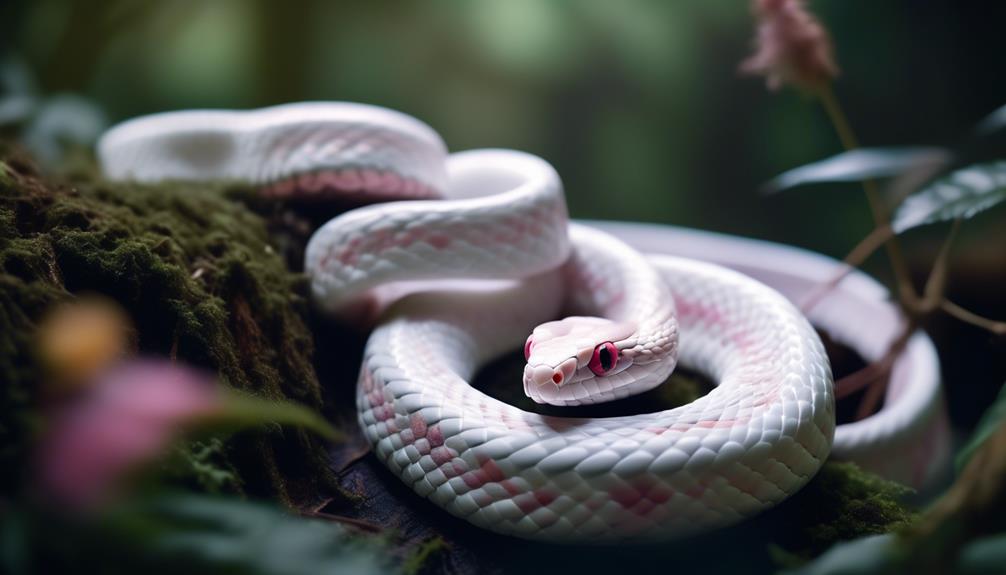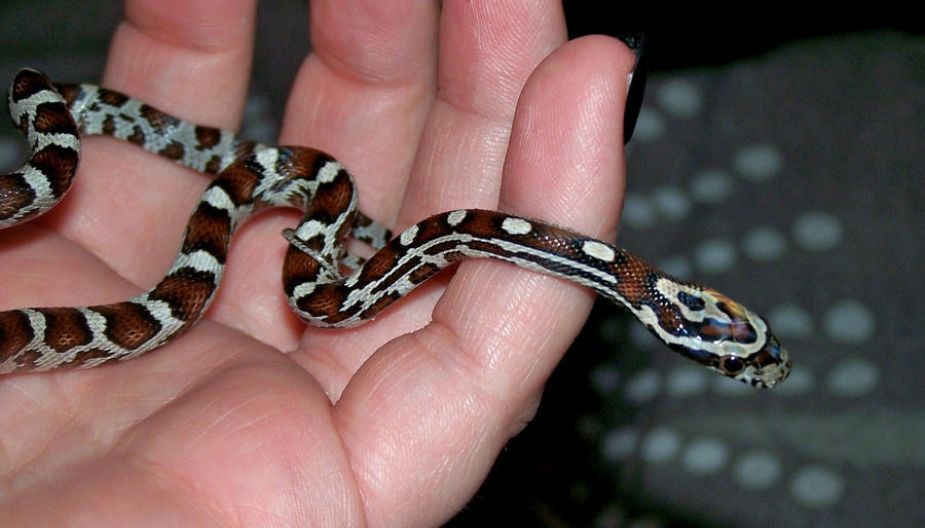You may think that choosing a corn snake morph is a simple task, just a matter of picking the one that catches your eye.
However, the world of corn snake morphs is a complex and fascinating one, filled with endless possibilities and variations. From vibrant colors to intricate patterns, each morph has its own unique charm and appeal.
But how do you go about finding the perfect one for you? Let's explore the art of navigating this morph mania and uncover the key factors that will help you make the best choice for your new reptilian companion.
Understanding Corn Snake Morph Genetics
Understanding Corn Snake Morph Genetics involves delving into the intricate patterns and variations in their genetic makeup that contribute to the fascinating array of morphs seen in these reptiles. Genetic inheritance plays a crucial role in determining the traits that a corn snake will exhibit. Corn snakes have a diploid genome, meaning they inherit two sets of chromosomes, one from each parent. This genetic information is passed down through generations, influencing the phenotypic expression of the snakes' physical characteristics, such as color, pattern, and scale texture.
Genetic inheritance follows specific patterns, including dominant and recessive traits. Dominant traits, such as the expression of the blood-red gene, only require one copy of the gene to be present for the trait to manifest. Conversely, recessive traits, like the caramel gene, necessitate both copies of the gene for the specific trait to be exhibited. Through the process of genetic recombination, new combinations of genes can arise, leading to an extensive range of phenotypic expressions in corn snake morphs.
Understanding these genetic principles is crucial for breeders and enthusiasts alike, as it allows for the intentional and ethical breeding of corn snakes to produce desired morphs, ensuring the well-being and preservation of these captivating reptiles.
Evaluating Physical Characteristics
To evaluate the physical characteristics of a corn snake, closely examine its coloration, pattern, and scale texture for identifying unique traits and variations. Corn snakes are known for their diverse color patterns and physical attributes, making them a popular choice among reptile enthusiasts. By understanding the different physical characteristics, you can better appreciate the beauty and diversity within the corn snake species. Here's a table to help you understand the variety of color patterns and physical attributes found in corn snakes:
| Color Pattern | Description | Physical Attributes |
|---|---|---|
| Normal | Orange or red with black-bordered | Smooth scales |
| Anerythristic | Black, gray, and white | Dull scales |
| Amelanistic | Red, orange, and yellow | Bright, vibrant scales |
Exploring Popular Corn Snake Morphs
As you explore popular corn snake morphs, delve into the intricate variations of color patterns and physical attributes that enthusiasts find captivating. Breeding techniques play a crucial role in producing the diverse array of color variations seen in corn snakes. Through selective breeding, breeders have created an extensive range of morphs, each with its own unique coloration and markings. Some popular morphs include the Blood Red Corn Snake, characterized by its deep red coloration; the Snow Corn Snake, exhibiting a clean white background with vibrant red or pink accents; and the Anerythristic Corn Snake, known for its lack of red pigmentation and instead displaying grayscale and black hues. These morphs are just a few examples of the remarkable diversity that can be achieved through breeding techniques.
In addition to the array of color variations, corn snake enthusiasts are drawn to the mesmerizing patterns and combinations that each morph presents. From striped and banded patterns to intricate mosaics and speckling, the possibilities seem endless. The careful selection and pairing of parent snakes through breeding techniques have resulted in an astonishing spectrum of visual appeal within popular corn snake morphs.
Factors to Consider When Choosing a Morph
When selecting a corn snake morph, there are several factors to consider. First, it is important to carefully consider the specific traits and characteristics that align with your preferences and breeding goals. This involves understanding the genetics of different morphs, as genetic inheritance plays a crucial role in determining the morphs of corn snakes. To achieve desired outcomes in breeding projects, it is essential to research and comprehend the inheritance patterns of various morphs.
In addition to understanding genetics, morph diversity is another crucial factor to consider. Assess the range of morphs available and determine the specific traits you want to work with. Whether you're aiming for specific color variations, patterns, or other physical attributes, the diverse range of corn snake morphs offers numerous options to align with your preferences and goals.
Finding Your Perfect Corn Snake Morph
Consider the specific genetic traits and physical characteristics that align with your breeding objectives when searching for the perfect corn snake morph. Evaluating temperament is crucial when selecting a corn snake morph, as certain morphs may exhibit variations in behavior. To ensure the best match for your needs, researching breeders who specialize in the specific morph you desire is essential. Look for breeders with a proven track record and a reputation for producing healthy, well-tempered snakes.
When finding your perfect corn snake morph, keep the following in mind:
- Genetic Compatibility: Ensure that the morph you choose aligns with your breeding goals and that it complements the genetic traits you aim to enhance or maintain.
- Physical Appearance: Consider the color, pattern, and overall appearance of the morph to ensure it meets your aesthetic preferences.
- Health History: Inquire about the health history of the morph you're interested in, and choose from breeders who prioritize the well-being of their snakes.
- Breeding Objectives: Align your choice of morph with your specific breeding objectives, such as producing certain color variations or patterns.
Conclusion
Now that you have a better understanding of corn snake genetics and physical characteristics, it's time to explore the world of popular morphs.
With so many factors to consider, from color and pattern to rarity and price, finding your perfect corn snake morph can be an exciting and challenging journey.
But fear not, with patience and knowledge, you'll soon discover the ideal morph that captures your heart and showcases the beauty of this fascinating species.
Happy hunting!


